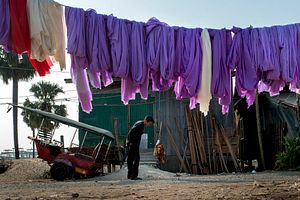Luc Forsyth and Gareth Bright have set out on a journey to follow the Mekong river from sea to source. The Diplomat will be sharing some of the stories they’ve found along the way. For more about the project, check out the whole series here.
Still in Phnom Penh, we spent multiple days visiting the residents of Beoung Kak and Beoung Tumpun Lakes to learn what happens to water-dependent communities when the water goes away.
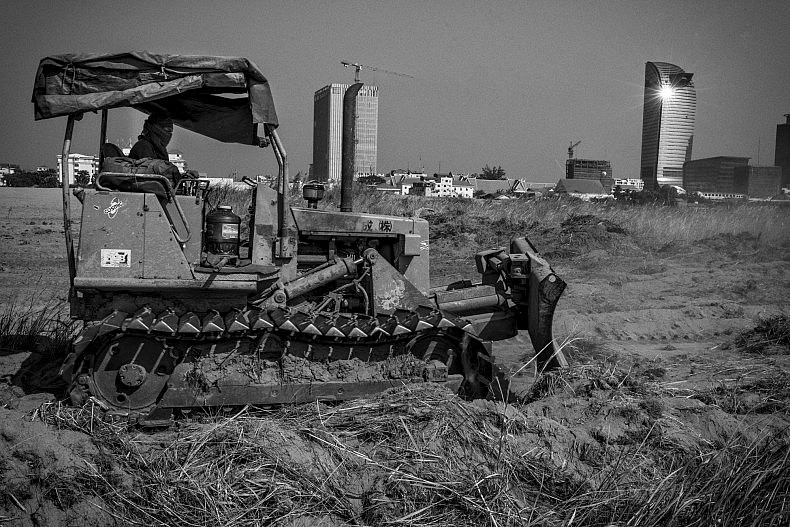
A bulldozer flattens sand that has filled in Phnom Penh’s Boeung Kak, once the largest freshwater lake in the city. Photo by Gareth Bright.
The first time I visited Phnom Penh, in 2010, I stayed near the thriving tourist and nightlife district that once surrounded Boeung Kak (Kak Lake). By that time, the lake’s fate had already been sealed, though the true impacts of the 99-year property lease granted to a local development company had not yet fully manifested themselves. Residents were still fishing and harvesting morning glory from the dark water, and children were still swimming in the sweltering afternoon heat.
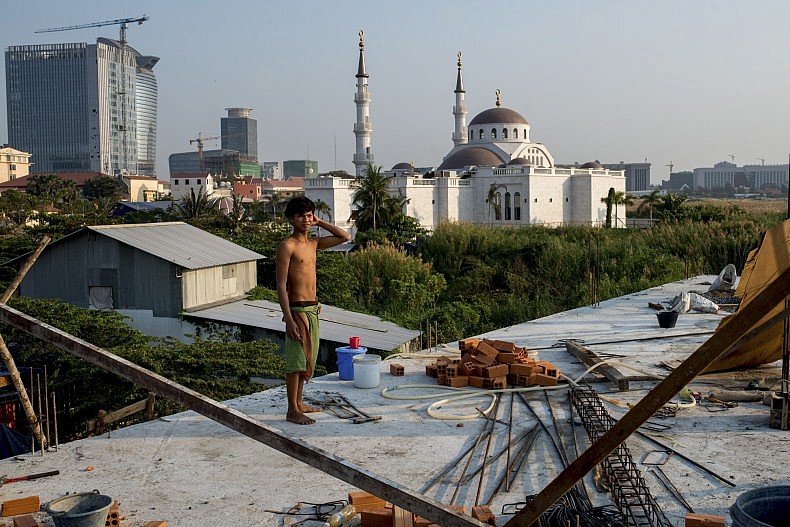
A construction worker stands on the roof of a building site on the outskirts of Phnom Penh’s Boeung Kak Lake. Photo by Luc Forsyth.
Nearly six years later, as we passed through Cambodia’s capital on our way to the Tonle Sap lake beyond, the area was a shadow of its former self. After the politically connected land developers were given the go-ahead to develop the lake into a luxury condominium complex, they decided to pump in millions of gallons of sand dredged from the Mekong and Tonle Sap rivers to displace the water and prepare the area for construction. Now the restaurants and backpacker hostels had either closed or relocated, and a three meter concrete wall ringed the barren sandpit that was once the largest wetland in the city. After more than six hours of crisscrossing the area, the only remaining water we could find was settled in the bottom of a stagnant ditch, its surface choked with plastic bags and styrofoam food containers.
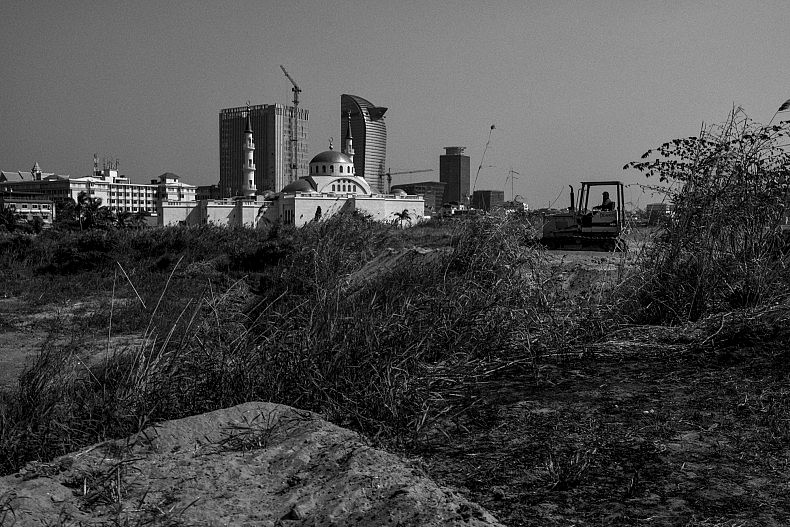
A bulldozer flattens sand that has filled in Phnom Penh’s Boeung Kak Lake, once the largest freshwater lake in the city. Photo by Gareth Bright.
“Three thousand families used to live here, making their living from fishing and farming,” remembered 37-year-old Ou Kong Chea, a Boeung Kak resident who watched the lake’s slow destruction over the last eight years. “Before things were better. People could make a living, attract tourists, and there were no floods. Now when it rains, the flood water [in my house] comes up to my waist.”
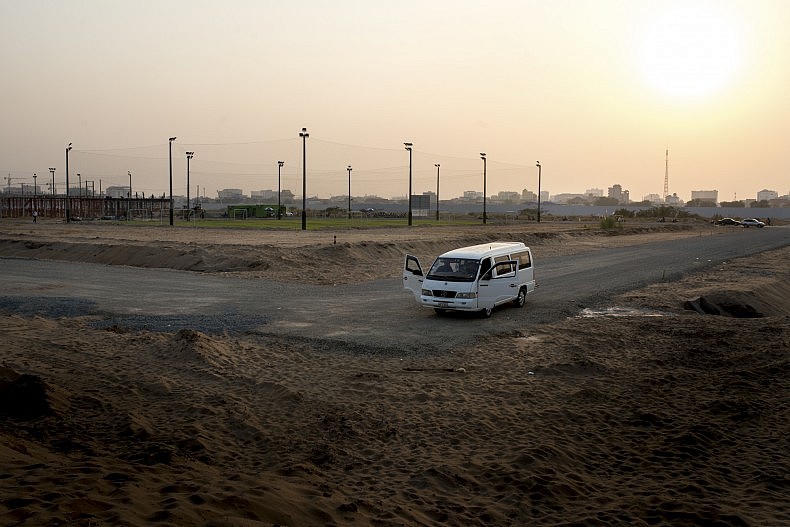
A van is parked in front of a series of football fields that have been built on the filled in remains of Phnom Penh’s Boeung Kak Lake. The fields cost $10 per hour to play on, a prohibitively high price for many local residents. Photo by Luc Forsyth.
Behind the bulldozer, lighting towers dotted the horizon, poking into the evening sky and encircling a cluster of vibrant green football fields that were — with the exception of a dusty gravel road — the only discernible feature on the otherwise barren landscape. We were told they would cost $10 per hour to play on, making it unlikely that anyone from the once-thriving lakeside community would be able to afford to play on them. Aquaculture and fishing, once the area’s primary sources of income, were vocations that had ceased to be viable after the lake water was replaced with sand dredged from the Mekong and Tonle Sap rivers.
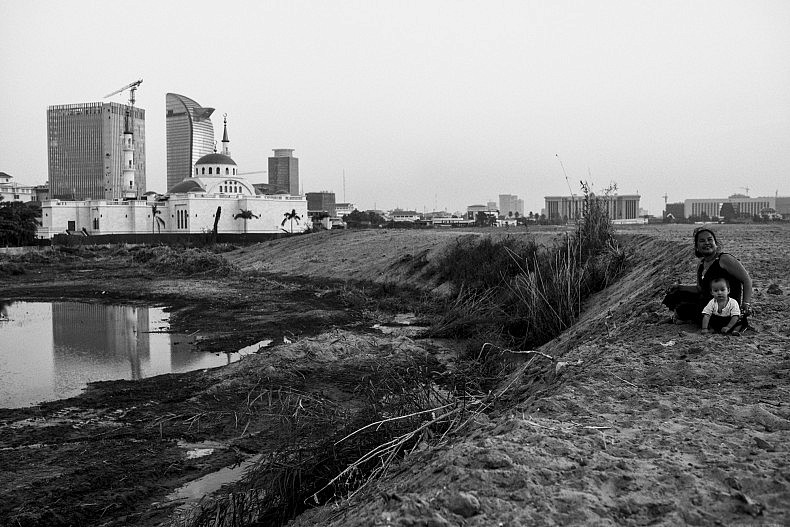
A woman and her toddler, residents of Boeung Kak Lake, sit on a sand mound. The lake, which has been filled in, was once the largest freshwater lake in the city. Photo by Gareth Bright.
It Was Better Before
When the construction crews packed up for the day, a group of young boys clambered onto the dunes and began lighting fires in the dry grass that was the only living thing on the sand other than a solitary young tree — which the boys allowed to burn in the spreading blaze. Though 3,000 families used to depend on the lake’s healthy ecosystem for subsistence, in the face of its utter destruction the death of a single tree must have seem like inconsequential collateral damage to them. When I asked one of them, a 12-year old with spiky black hair, why he was starting fires he shrugged and said enigmatically, “It was better before.”
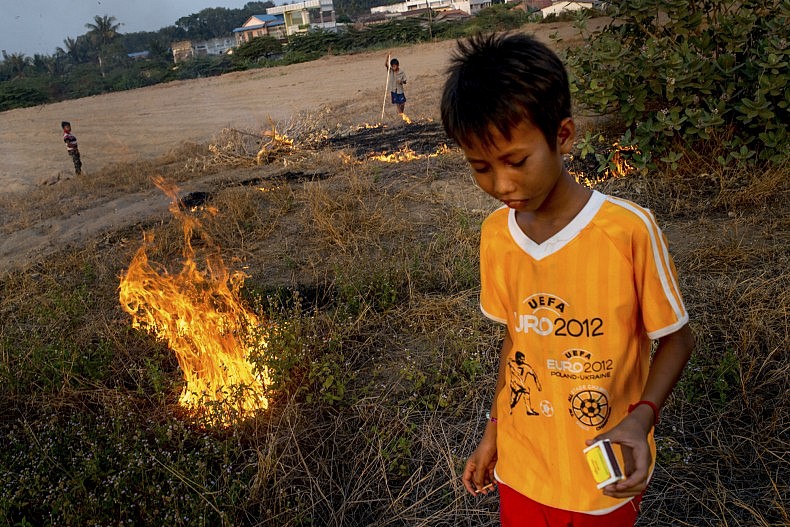
Boys start small fires in the dry grass that has grown on the sand that was used to fill in Boeung Kak Lake, once Phnom Penh’s largest freshwater lake. Photo by Luc Forsyth.
Having witnessed the lake’s death rattle over the last five years of visiting and living in Cambodia, we were inclined to agree: it was better before.
Across town on Phnom Penh’s southern extremity, residents of Boeung Tumpun (Tumpun Lake) were facing a similarly bleak fate. Though Tumpun still retained some of its water (giving it the de facto distinction as the largest remaining freshwater lake in the city), dozens of large-diameter PVC pipes had been steadily filling the reservoir with sand that unrelentingly encroached on the remaining aquatic farmland.
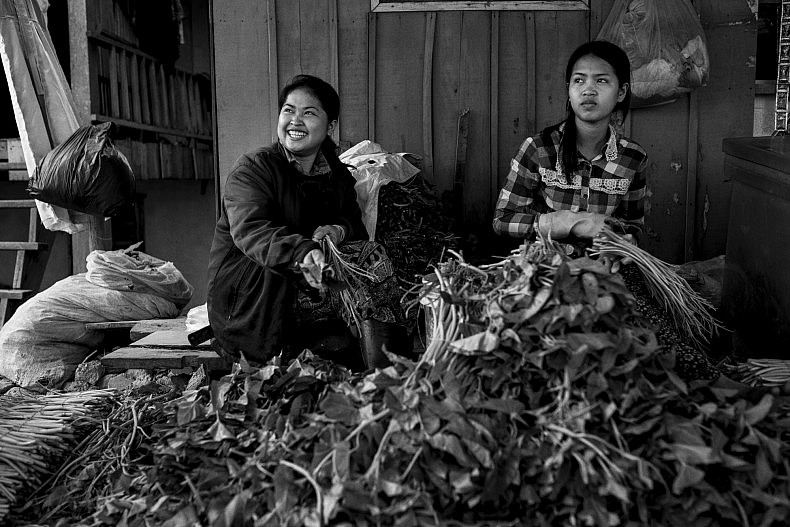
Morning glory farmers bundle their crops for sale at a local market in Phnom Penh’s Boeung Tumpun Lake. The lake is the source of much of the city’s morning glory, but it is currently being filled in with sand. Photo by Gareth Bright.
From the porch of his family house that he built 14 years earlier, Mao Sarith looked across the small green belt of remaining farmable land toward the vast wall of sand bearing down on him with the slow destructive certainty of an iceberg. “People didn’t need anything before. With the [farming and fishing] from the lake, they could earn everything they needed,” Mao remembered. At 61 years old, Sarith’s farming days were mostly over, but his family of six still depended on the lake for income.
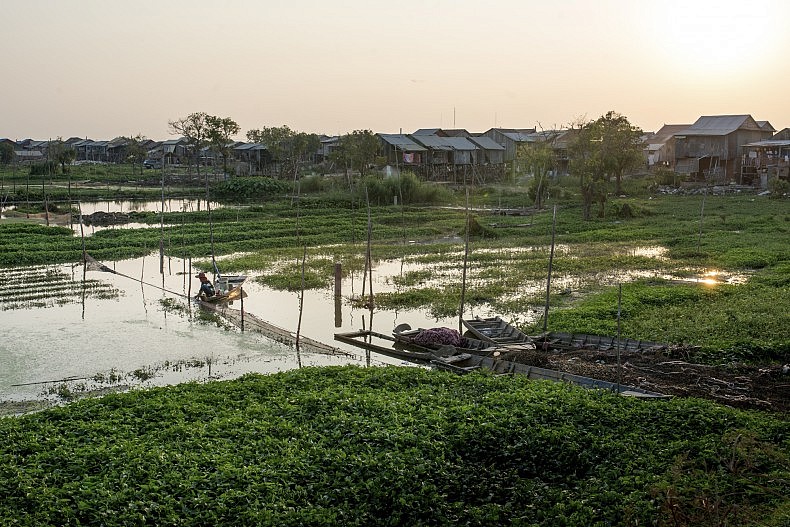
A farmer tends to his aquatic crops on Phnom Penh’s Boeung Tumpun Lake. Photo by Luc Forsyth.
“I used to be able to farm near my house…the land was large and the water was clean. [But now] the farmland is smaller and we can’t produce as much. Now the water is little, and it’s dirty and smelly, so the crops don’t grow as well. I used to be able to earn $100 each time I went to market, but now it’s more like $25,” Sarith lamented. For the younger of his four children, this loss of equity will likely force them out of school to supplement family earnings by taking on full time work.
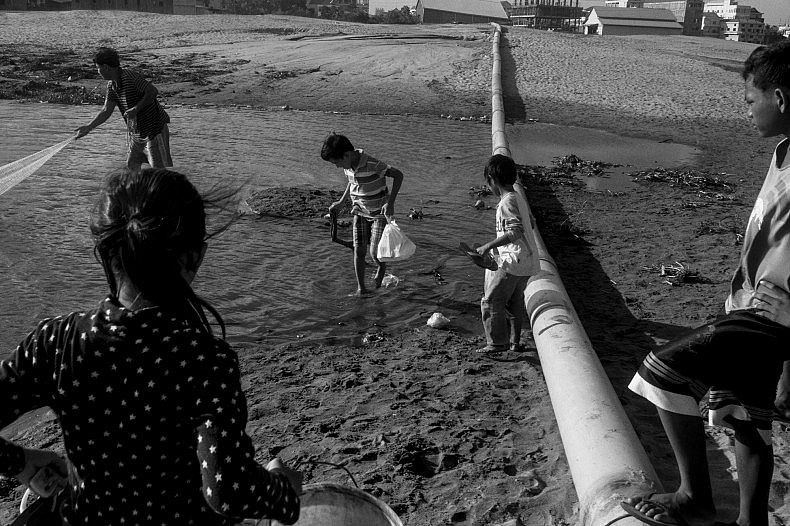
A fisherman teaches with his children at what is left of Phnom Penh’s Boeung Tumpun Lake. Photo by Gareth Bright.
And Then There Was Sand
When we asked Sarith’s daughter, Lun Heng, some painfully rhetorical questions about the family’s future without access to water, her responses were predictably pessimistic. “We feel scared. Before we could earn money here, but not anymore. Some people from NGOs (non-governmental organizations) visited and told us that [the developers] plan to kick us out so that they can build here, but I think the water is more important than condos and villas.”
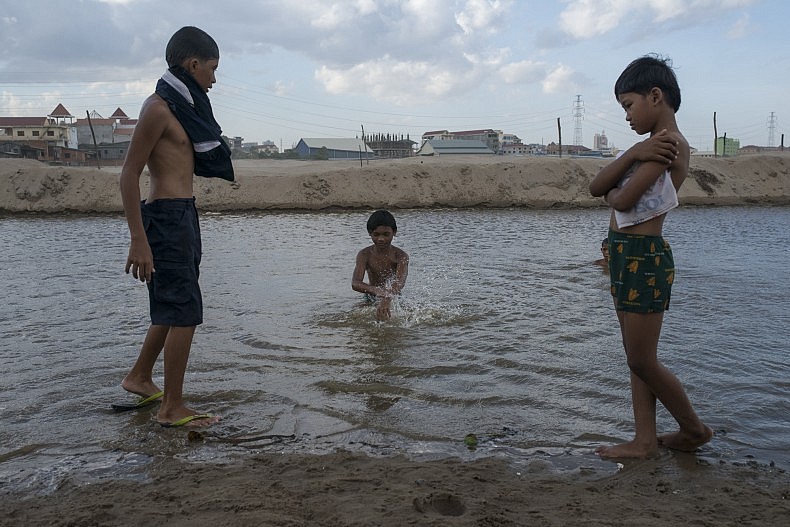
Children in what is left of Phnom Penh’s Boeung Tumpun Lake. Photo by Luc Forsyth.
Sitting with Sarith and his family watching the sand slide inexorably closer to his vegetable plot, it was easy to see why they were nervous. For people who had subsisted from aquaculture and fishing their entire lives, the loss of water was nothing short of an economic catastrophe. And like the people we spoke with at Boeung Kak, the motivations behind such developments were difficult for Boeung Tumpun residents to rationalize.
“I bought this land, and I want to live here,” Sarith told us. “A lot of people depend on the lake. I’ve seen a lot of trouble happen in Cambodia, but this situation is very bad. Water should be public, but somehow it [has become] private, it belongs to companies. People should be free to use nature.”
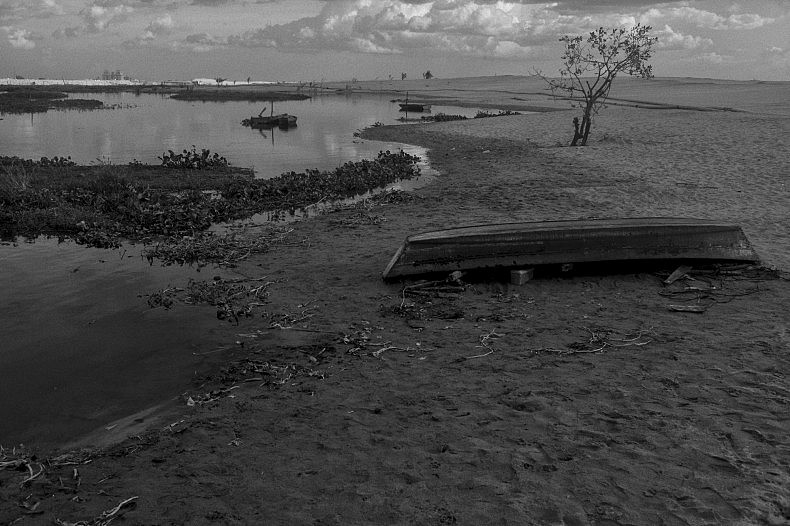
A an old boat lies unused Boeung Tumpun Lake. The lake is the source of much of the city’s morning glory, but it is currently being filled in with sand. Photo by Gareth Bright.
A few hundred meters away, 50-year-old Vanna Oi watched from the steps of his stilted wooden house with an air of resigned detachment as a bulldozer gouged a path through what was once his front yard. “Before it was good,” he said, echoing the feelings of the boy at Boeung Kak. “The water was clean, and then they filled it with sand. I’m not really happy anymore.” As the bulldozer pushed mounds of dirt up to the bottom of his stairs, he added, “I don’t even have a way to get out of my house.”
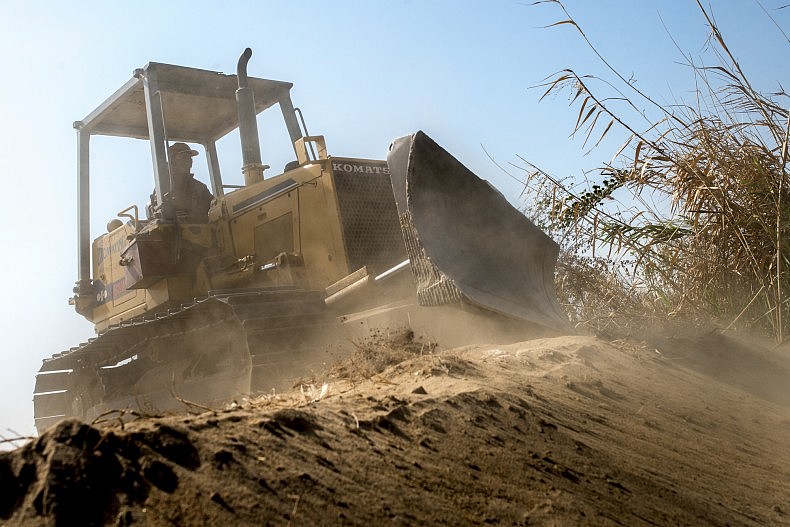
A bulldozer flattens sand that has filled in Phnom Penh’s Boeung Kak Lake, once the largest freshwater lake in the city. Photo by Luc Forsyth.
Throughout the course of our travels to date we had seen many instances of water mismanagement, but Phnom Penh’s vanishing lakes provided a chilling look into what the future could look like for Mekong dwellers if the river is not handled with some care. Though it is highly unlikely that the Mekong will be filled in with sand and flattened to make way for football fields, it is imaginable that without proper stewardship the river could cease to support the people who depend on it. And as we saw during our time at the lakes, when the water is gone the results can be disastrous.
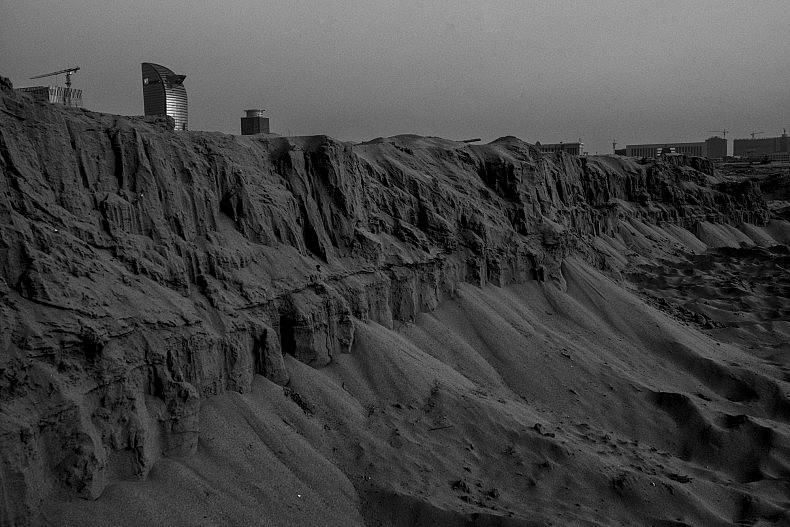
Phnom Penh’s Vattanac Capital Tower peaks out from the sand filled Boeung Kak Lake. Photo by Gareth Bright.
This piece originally appeared at A River’s Tail.













